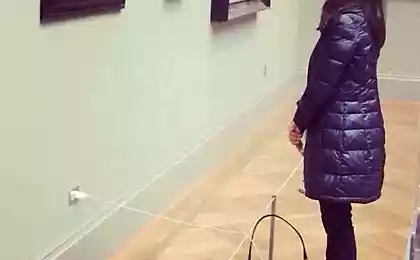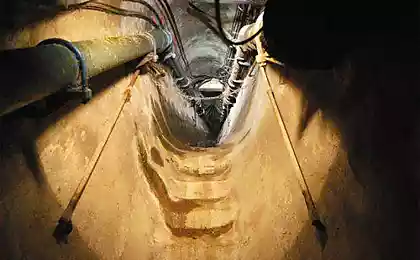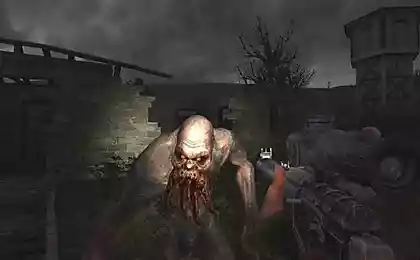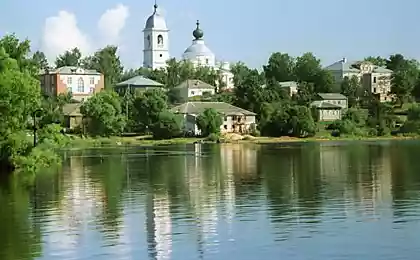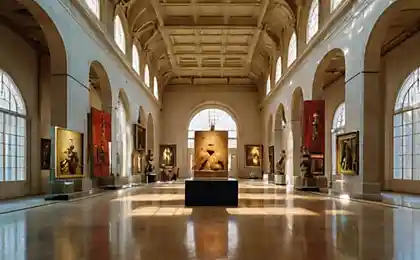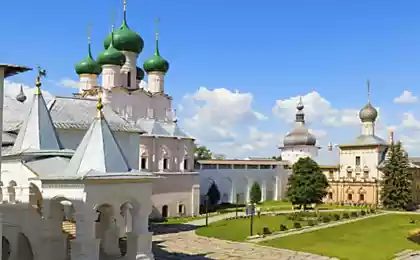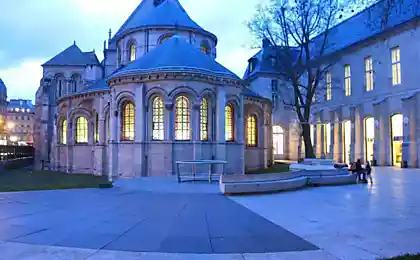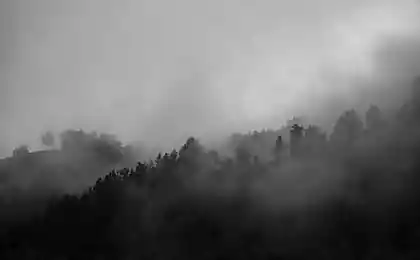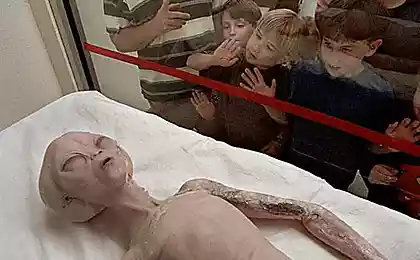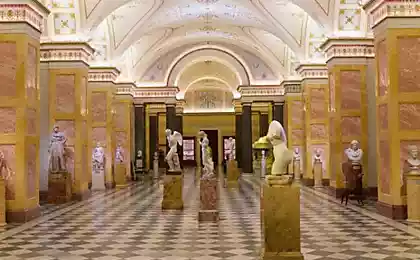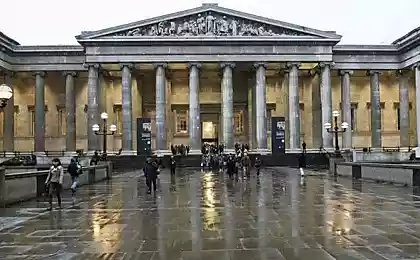1978
On the tour of the National Museum of Altai
We invite you to take a virtual trip to a huge National Museum of the Altai, along with the author, and look at the existing exhibits there. Just from the post, you will be able to learn a little history of the places.
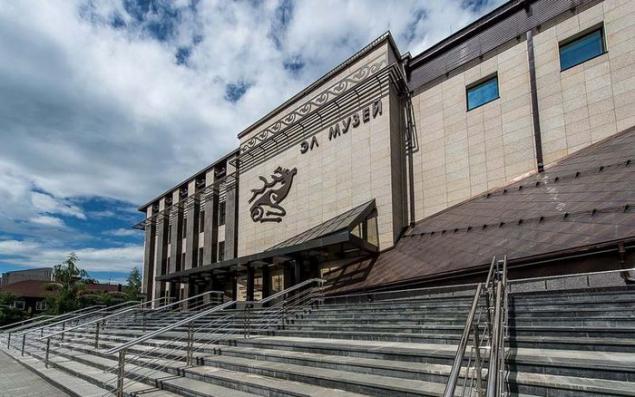
The museum is divided into several sections: one exhibited objects of culture of peoples of the Stone Age, in other - numerous artifacts of the Neolithic, Chalcolithic, Bronze Age, Iron Age, Scythian, ancient Turkic era ...
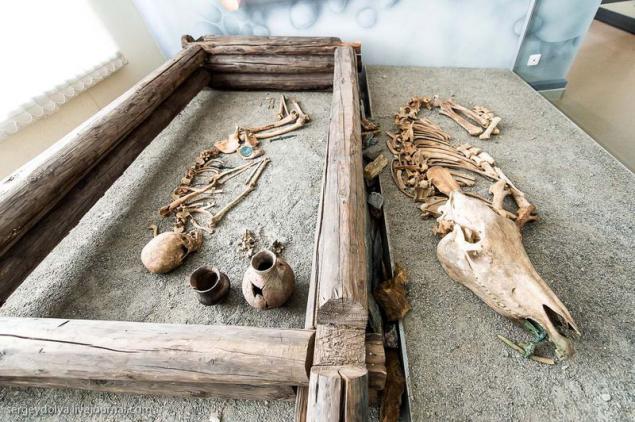
Kurota Artybash located in the north of Lake Teletskoye. It's like Listvyanka on Lake Baikal - the most popular and affordable destination for tourists. It was there and ended our trip to the reserved CORDON:
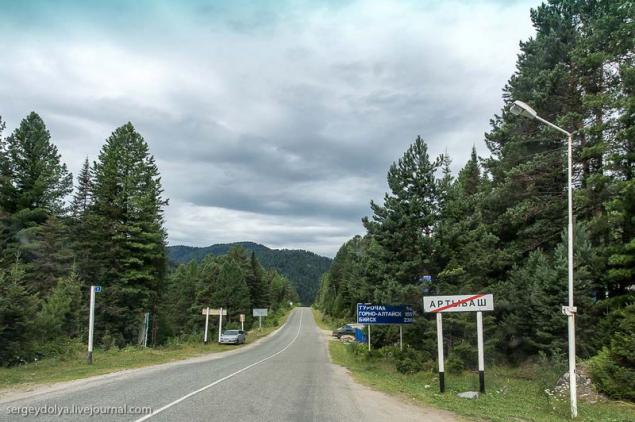
On the way in Gorno-Altaisk noticed billboards with public service announcements:
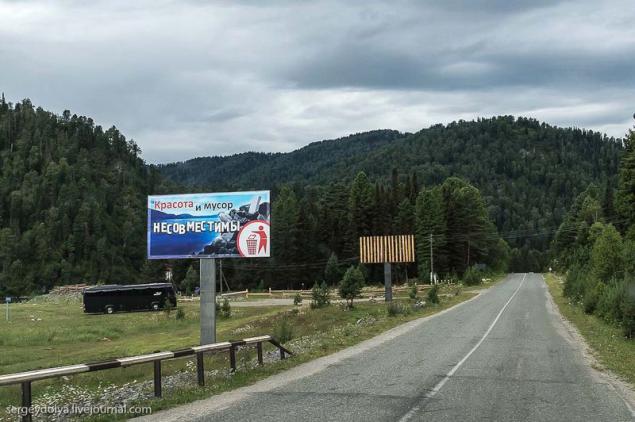
Of course, from the point of view of normal social advertising is just ridiculous, but I am glad that people are thinking about the nature and concerned about litter. Even the toilet is on the parking lot, look:
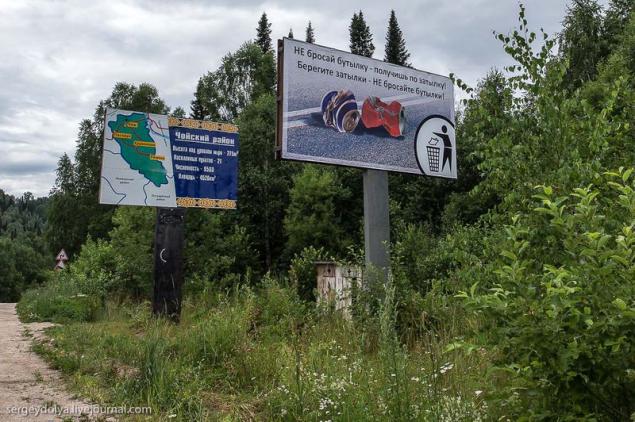
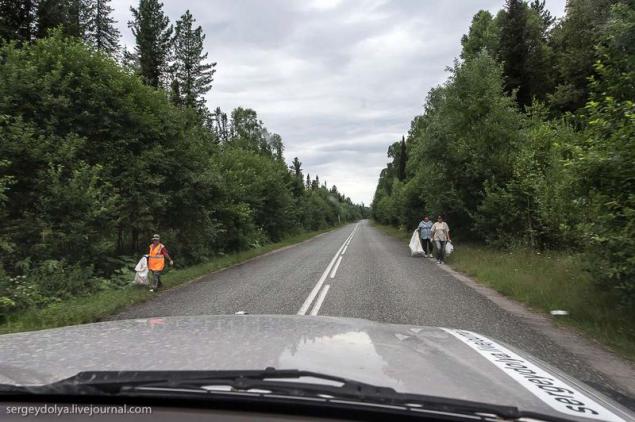
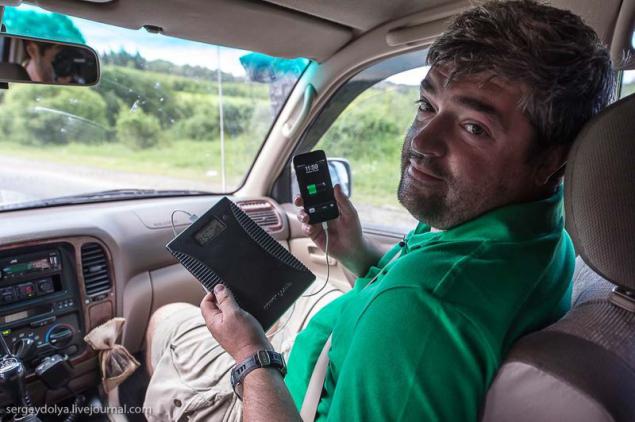
Gorno-Altaisk:

We came for the museum Anokhin. Generally, Gorno-Altaisk - a small town and it was very surprising to see a huge museum. At the time, Gazprom wanted to put a tube through a protected space and to somehow mitigate the outrage of local residents, gave the city museum.
It presents the entire history of the Altai. Here are kept many archaeological artifacts that illustrate one time or another, more ancient period recreated in the form of installations:
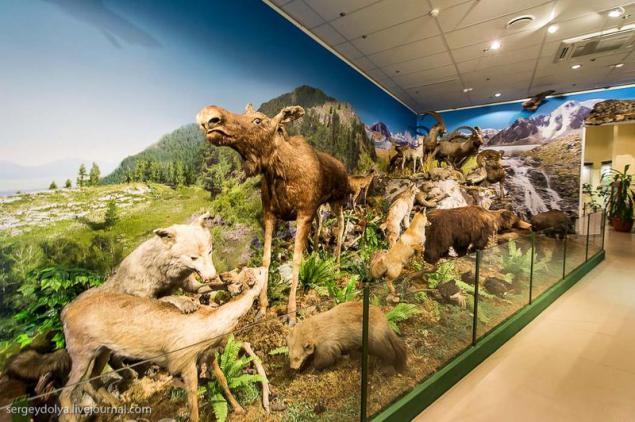
There is even the last century, which, frankly, we were trying to hurry to rush:
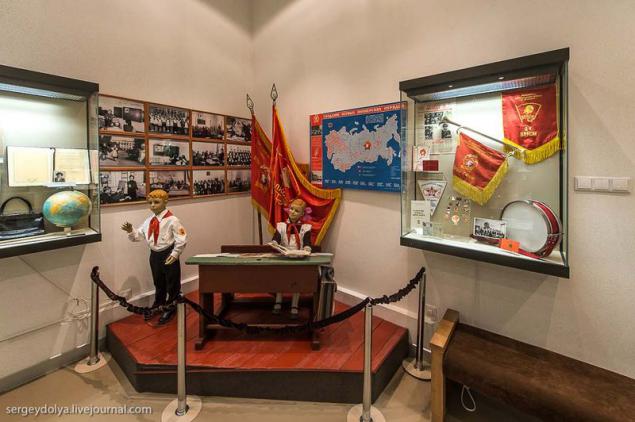
Shura balls and Vasya scales. Greetings from the Soviet primer:
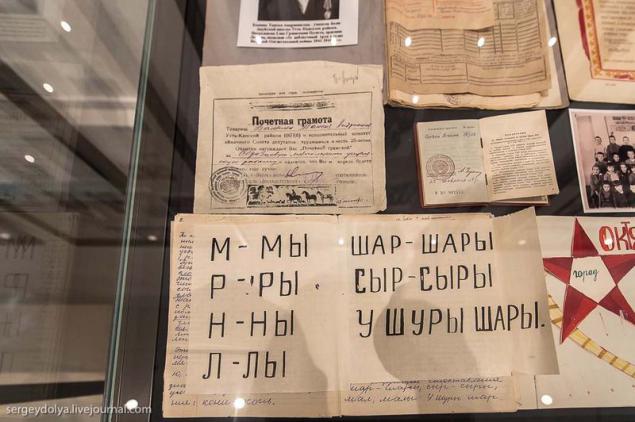
From the third millennium BC in the Altai there are several parallel cultures Afanasyevskaya Culture Andronovo culture okunev culture, Karakol culture. In the early Iron Age came Argens-mayemirsky step for him was the Pazyryk culture (parallel to or inside the Kara-Koba culture), then Hunnish era Bulan-Koba culture. In our era of Altai reigned ancient Turks, the Mongols, Dzhungars until in 1765 the North Altai was not included in the Russian Empire.
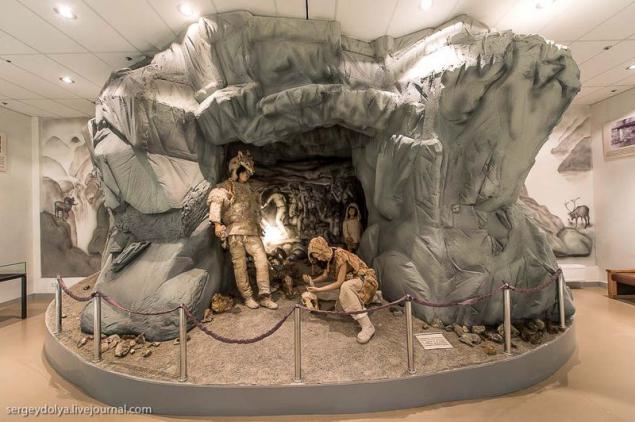
Exposure caveman. People hit the rocks together, flew "otschipy", which was used as arrowheads, knives, etc .:
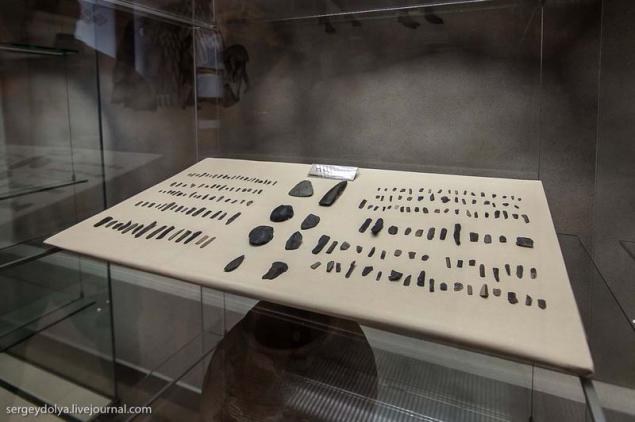
Scythians. The guide admitted that prepare properly this installation did not have time, so the Scythians dressed mannequins from shop:
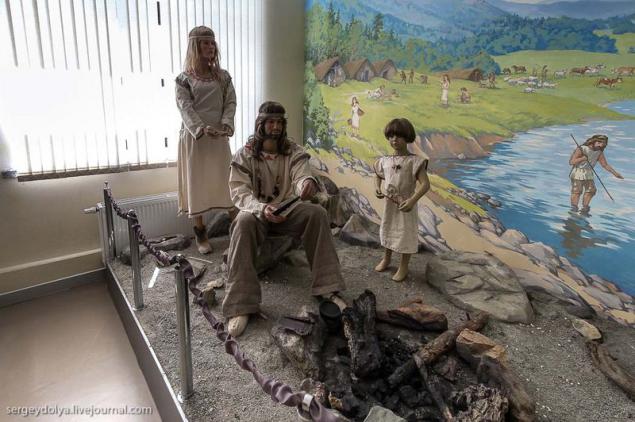
A copy of the Scythian carpet:
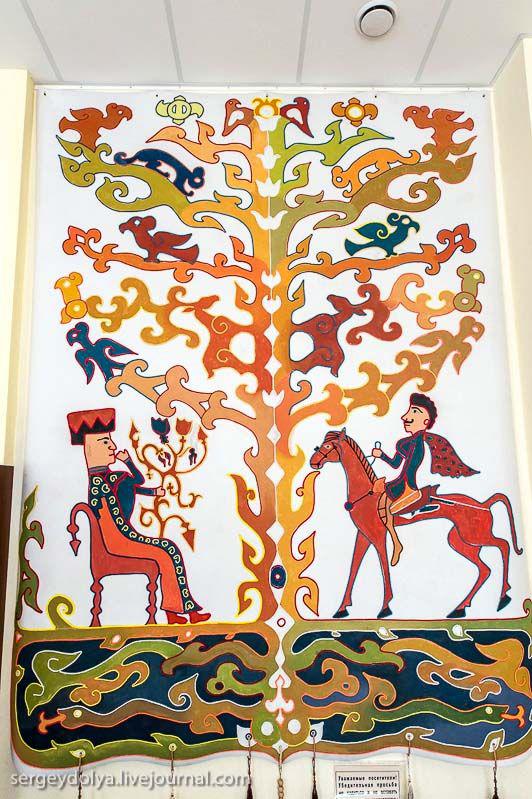
Scythian tomb: the owner, acquired the good and faithful horse:
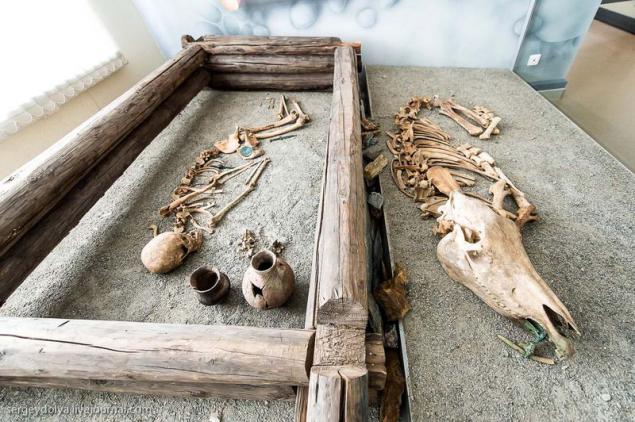
Turks. If you do not take into account the European roots of the dummy, they were dressed like this:
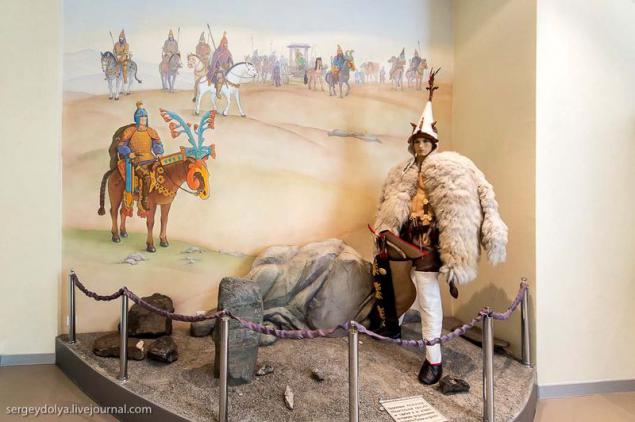
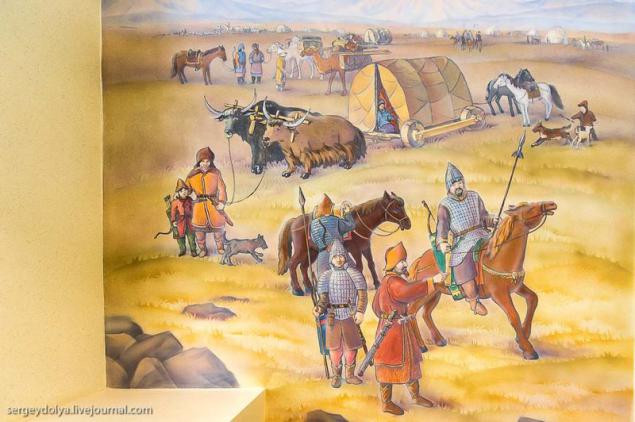
In Bulan-Koba version of the ritual of the horse decided to give up, but the value and gold is still placed with the deceased:
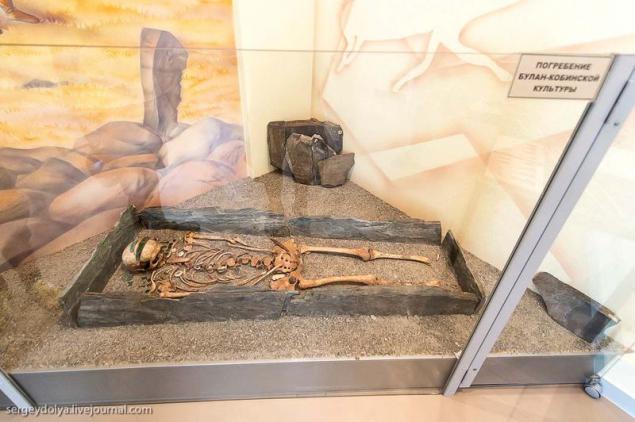
Whistling arrows, apparently, belonged to the Mongols. With their help you can give a signal to the army or to intimidate the enemy:
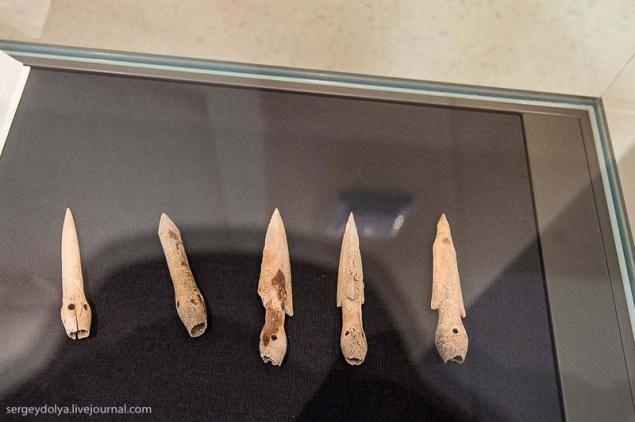
Gradually emerging from the depths of centuries:
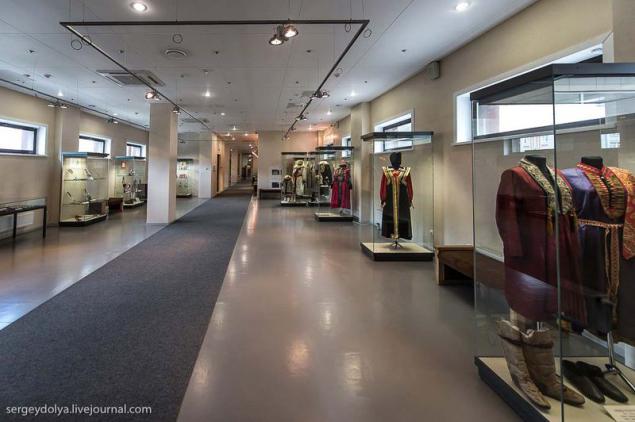
Model national home. Left - half man, the right woman. In one of the tools for hunting, on the other - pots and kettles. The rear part, which is further away from the entrance of the most honorable. There were invited to visit a favorite:
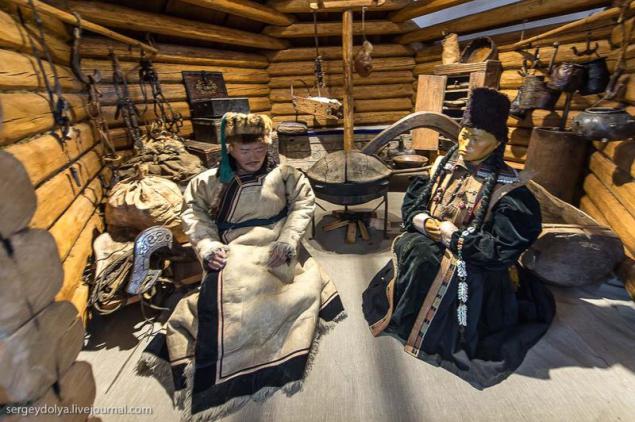
Nakosnye decorations. Hairstyle Altaian shows its belonging to a certain social and age group. Numerous decorations made sense. For example, these leather bags talked about what mistress accessory - mother of many children. The Baggies, incidentally, kept the umbilical cord of newborns:
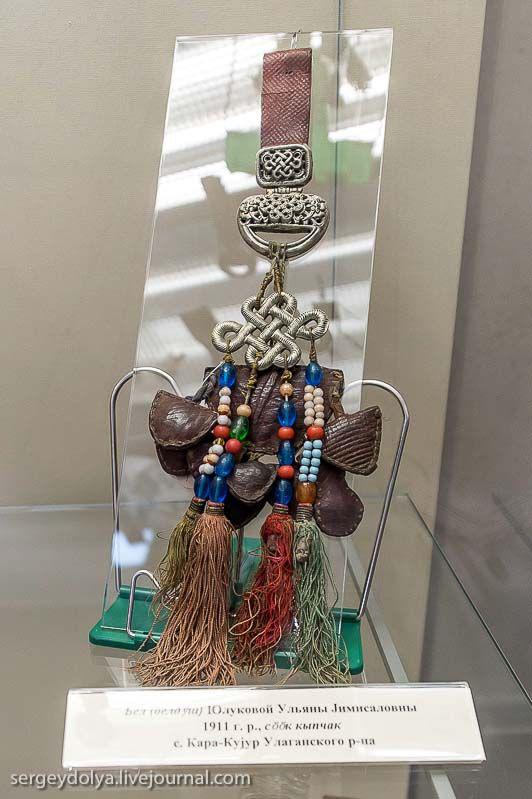
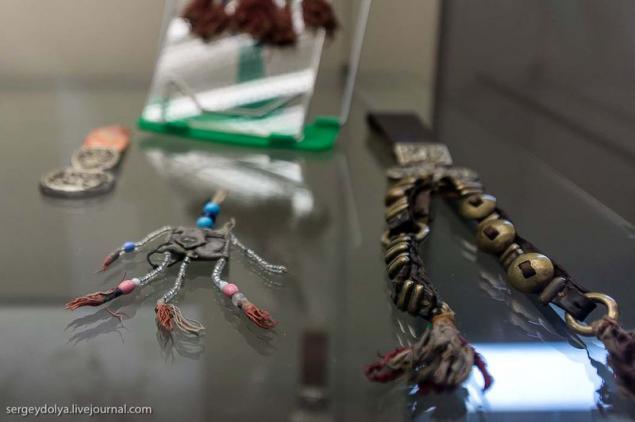
Tambourine:
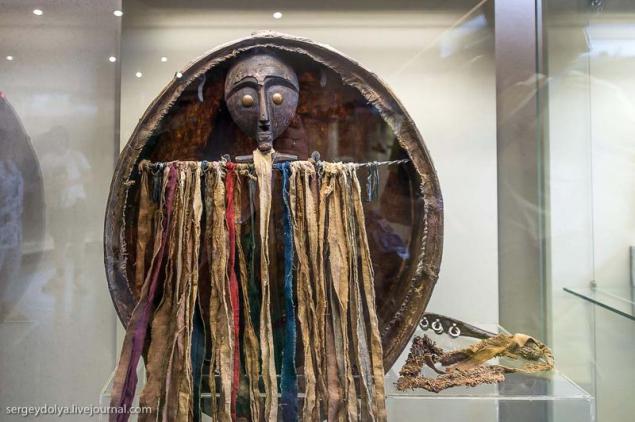
Dzhungaria:
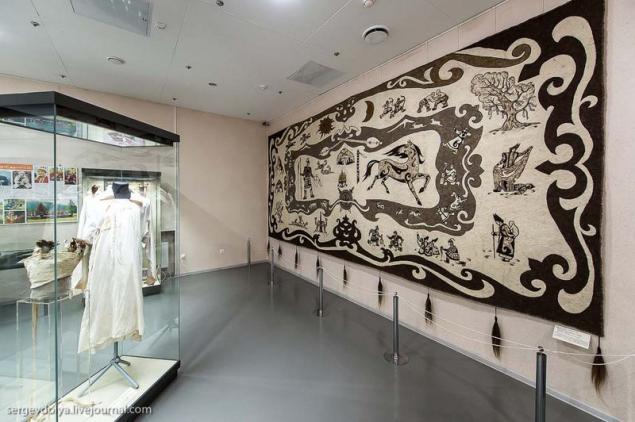
And finally, our:
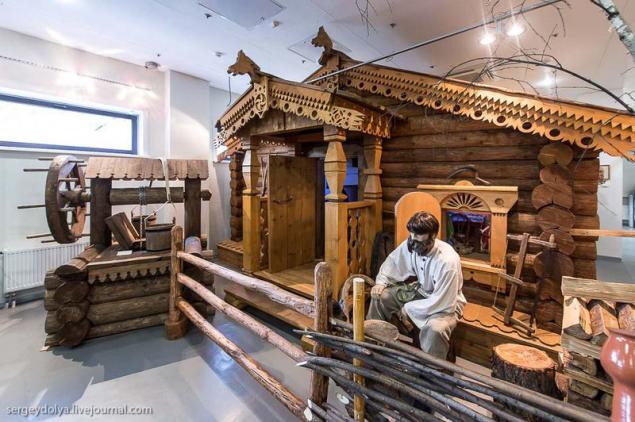
The main reason for the construction of the museum (after the pipe, of course) - is stored Siberian Ice Maiden, one of the most significant archaeological finds in the world. It was discovered in a layer of ice in 1993 in a mound of the Scythian period in the Altai Ukok plateau, near the border with Mongolia. Age mummy is estimated at 2, 5 thousand years. To preserve the body underwent a major renovation of the museum and a "princess" made a separate room with special climatic conditions.
For some reason, the sarcophagus was closed. But the guide assured us exactly what the princess on the spot:
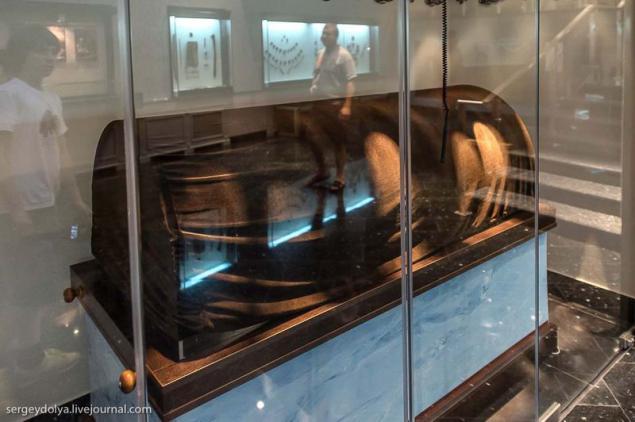
We managed to see only the beauty of the photo:

Approximately looked very zaharonenie:
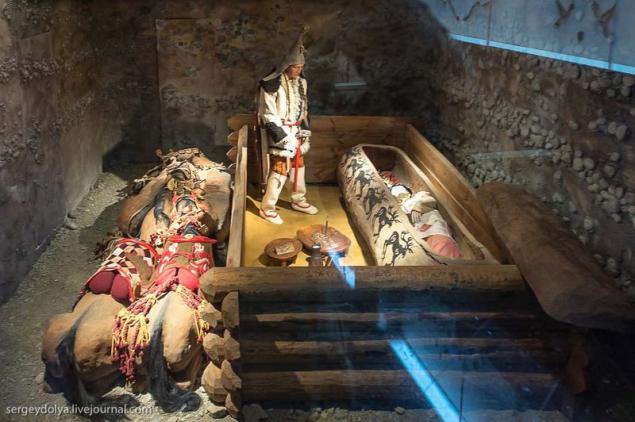
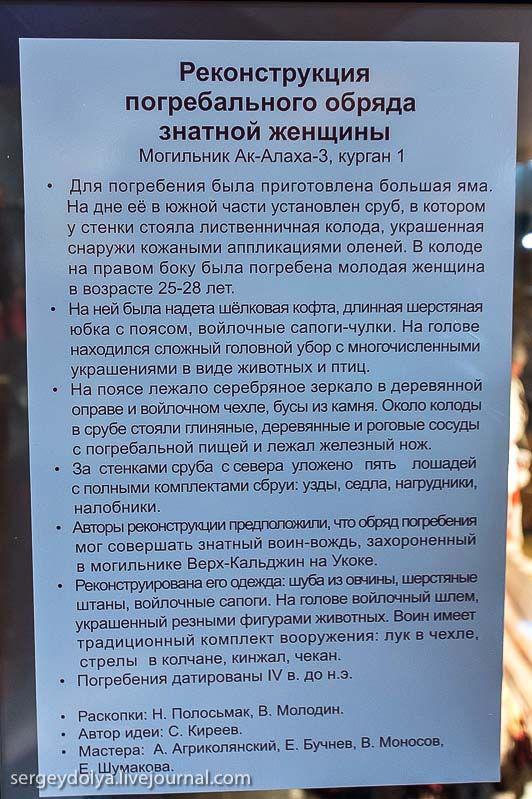
Here is a museum. Will Gorno-Altaisk - be sure to visit:
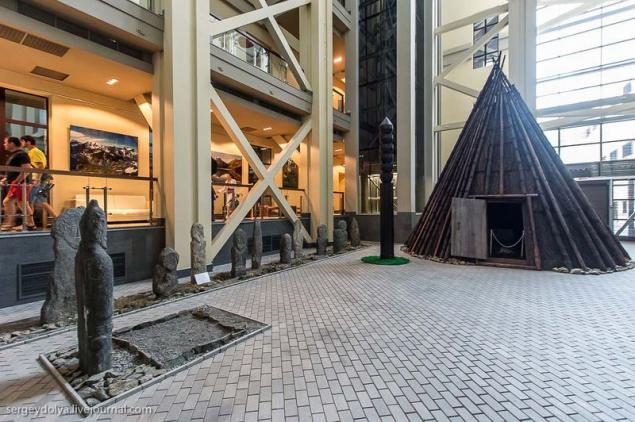
Source: sergeydolya.livejournal.com

The museum is divided into several sections: one exhibited objects of culture of peoples of the Stone Age, in other - numerous artifacts of the Neolithic, Chalcolithic, Bronze Age, Iron Age, Scythian, ancient Turkic era ...

Kurota Artybash located in the north of Lake Teletskoye. It's like Listvyanka on Lake Baikal - the most popular and affordable destination for tourists. It was there and ended our trip to the reserved CORDON:

On the way in Gorno-Altaisk noticed billboards with public service announcements:

Of course, from the point of view of normal social advertising is just ridiculous, but I am glad that people are thinking about the nature and concerned about litter. Even the toilet is on the parking lot, look:



Gorno-Altaisk:

We came for the museum Anokhin. Generally, Gorno-Altaisk - a small town and it was very surprising to see a huge museum. At the time, Gazprom wanted to put a tube through a protected space and to somehow mitigate the outrage of local residents, gave the city museum.
It presents the entire history of the Altai. Here are kept many archaeological artifacts that illustrate one time or another, more ancient period recreated in the form of installations:

There is even the last century, which, frankly, we were trying to hurry to rush:

Shura balls and Vasya scales. Greetings from the Soviet primer:

From the third millennium BC in the Altai there are several parallel cultures Afanasyevskaya Culture Andronovo culture okunev culture, Karakol culture. In the early Iron Age came Argens-mayemirsky step for him was the Pazyryk culture (parallel to or inside the Kara-Koba culture), then Hunnish era Bulan-Koba culture. In our era of Altai reigned ancient Turks, the Mongols, Dzhungars until in 1765 the North Altai was not included in the Russian Empire.

Exposure caveman. People hit the rocks together, flew "otschipy", which was used as arrowheads, knives, etc .:

Scythians. The guide admitted that prepare properly this installation did not have time, so the Scythians dressed mannequins from shop:

A copy of the Scythian carpet:

Scythian tomb: the owner, acquired the good and faithful horse:

Turks. If you do not take into account the European roots of the dummy, they were dressed like this:


In Bulan-Koba version of the ritual of the horse decided to give up, but the value and gold is still placed with the deceased:

Whistling arrows, apparently, belonged to the Mongols. With their help you can give a signal to the army or to intimidate the enemy:

Gradually emerging from the depths of centuries:

Model national home. Left - half man, the right woman. In one of the tools for hunting, on the other - pots and kettles. The rear part, which is further away from the entrance of the most honorable. There were invited to visit a favorite:

Nakosnye decorations. Hairstyle Altaian shows its belonging to a certain social and age group. Numerous decorations made sense. For example, these leather bags talked about what mistress accessory - mother of many children. The Baggies, incidentally, kept the umbilical cord of newborns:


Tambourine:

Dzhungaria:

And finally, our:

The main reason for the construction of the museum (after the pipe, of course) - is stored Siberian Ice Maiden, one of the most significant archaeological finds in the world. It was discovered in a layer of ice in 1993 in a mound of the Scythian period in the Altai Ukok plateau, near the border with Mongolia. Age mummy is estimated at 2, 5 thousand years. To preserve the body underwent a major renovation of the museum and a "princess" made a separate room with special climatic conditions.
For some reason, the sarcophagus was closed. But the guide assured us exactly what the princess on the spot:

We managed to see only the beauty of the photo:

Approximately looked very zaharonenie:


Here is a museum. Will Gorno-Altaisk - be sure to visit:

Source: sergeydolya.livejournal.com





